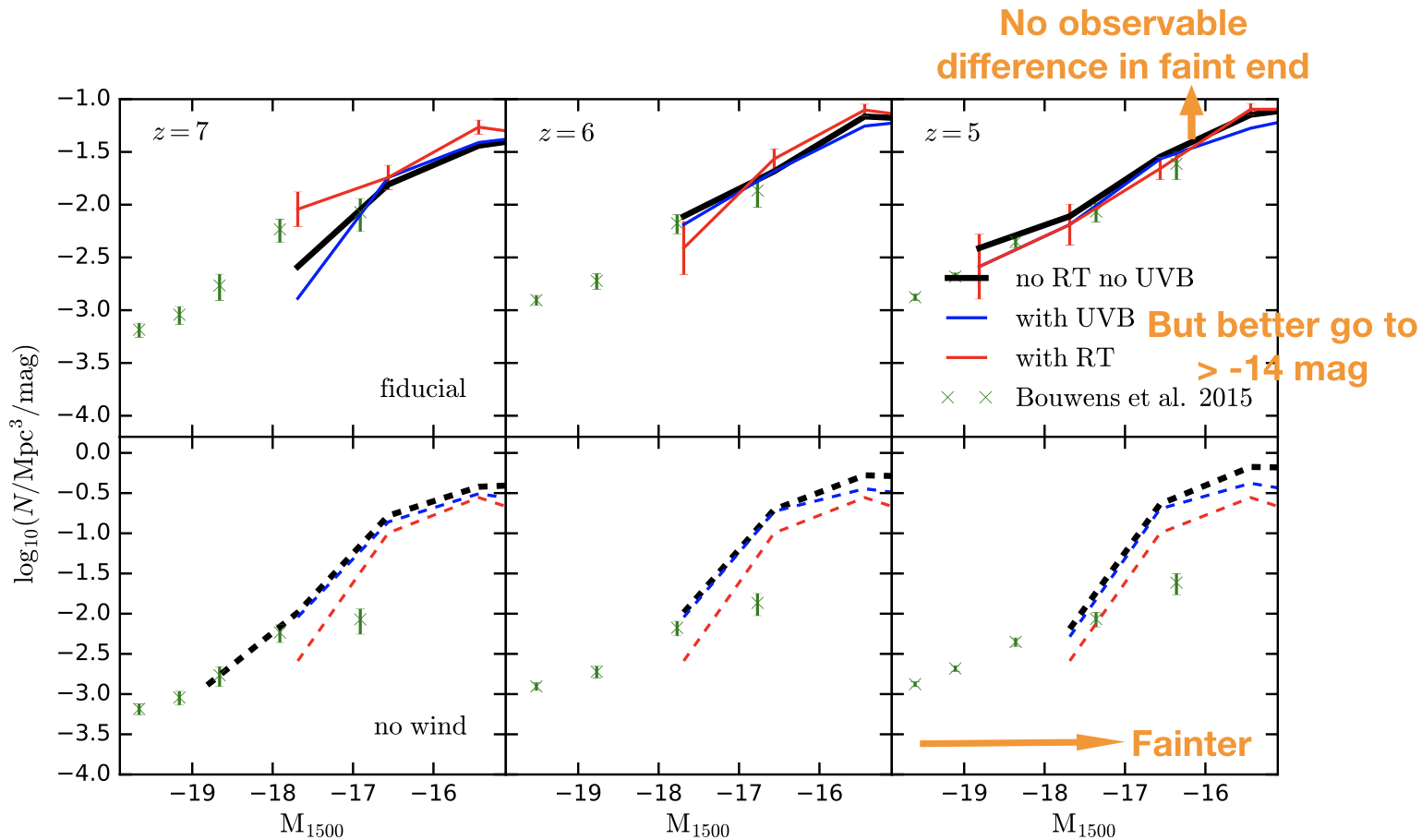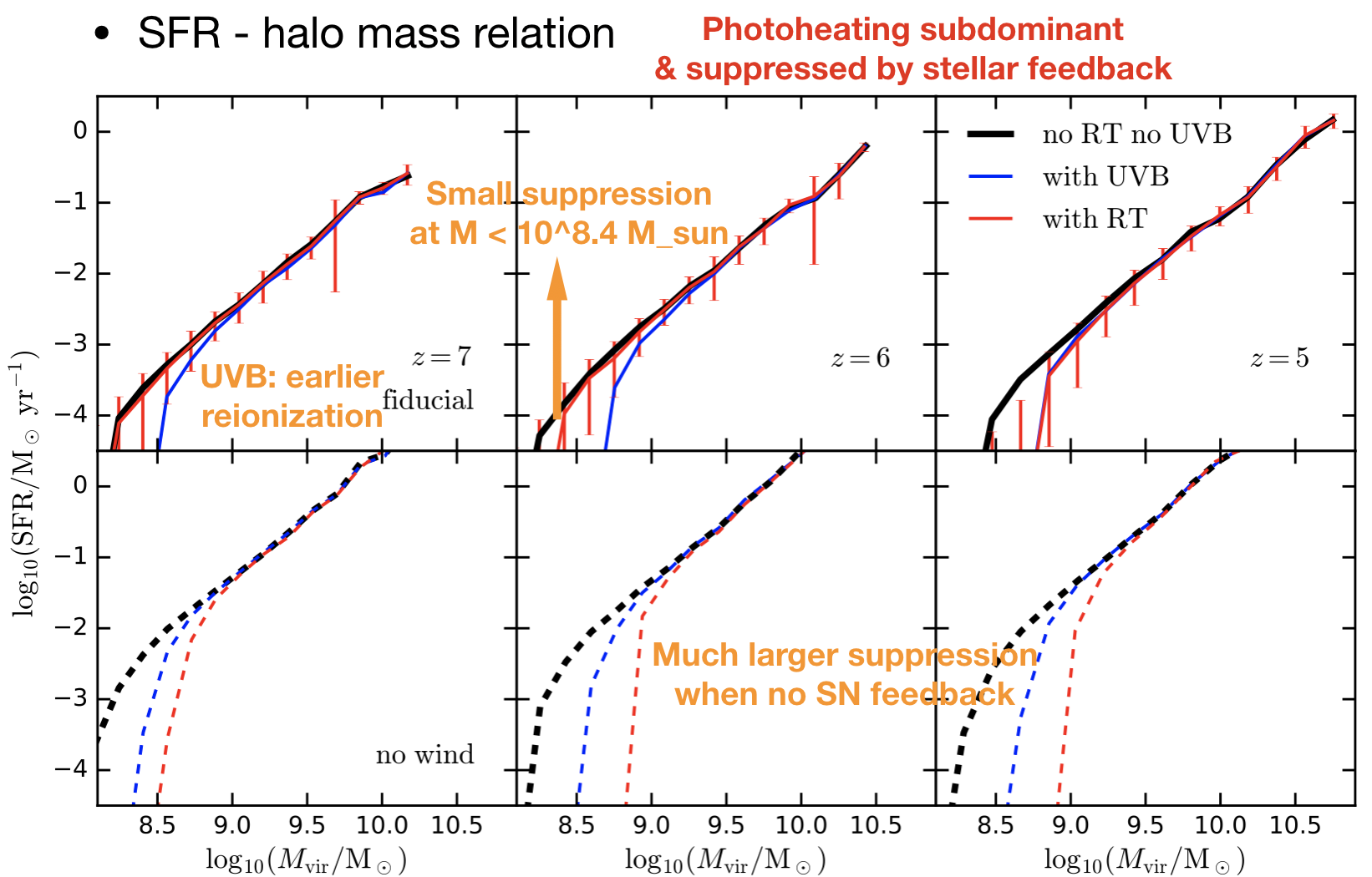Photoheating feedback during reionization
Photoionization of the IGM heated the gas up from ∼100 K to over 10,000 K, which evaporates the gas reservoir of low-mass galaxies and prevents the IGM from being accreted onto them. This reionization feedback thus suppresses star formation in small galaxies and likely causes a flattening in the faint-end slope of the galaxy luminosity function at the redshifts of reionization, which we might observe as a signature of reionization.
To study how reionization affects the luminosity function, I ran reionization simulations with the Illustris galaxy formation model that includes star formation and supernova feedback. I found that reionization feedback is sub-dominant compared to supernova feedback in regulating star formation, resulting in negligible suppression of the faint end of the luminosity function (Fig. 1). I also found that reionization feedback is weakened by supernova feedback as the latter reduces the number of stars as ionizing sources (Fig. 2), but this effect is unique to the Illustris model where supernova feedback does not impact the ambient interstellar medium. My finding has implications beyond reionization, that galaxy formation simulations are more robust when compared at the IGM level than within galaxies.

